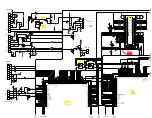
Step 3 – Attach the Hitch Head to the Shank
Tools Needed:
• Torque wrench capable of 250 ft-lbs
• 1 1/8” Socket with ratchet (Shank bolts)
• 1 1/16” Socket with ratchet (Shank nuts)
• 15/16” Socket or box-end wrench (Angle set bolt)
Level the Trailer (Parallel to the Ground)
Measure to the ground at the front and back of the trailer frame and
adjust the trailer to be parallel to the ground. Both front and back
measurements should be the same.
Attach Head to Shank
1. Insert the adjustable shank into the receiver on the tow vehicle
and secure it with the hitch pin.
2. Insert the spacer rivet with washers into the back of the hitch
head. Start with 5 spacer washers for most setups. (Figure 1)
3. Slide the hitch head onto the shank with the top of the hitch ball
between 0 — 1” above the top of the trailer coupler. (Figure 2)
In some cases you may need to turn the shank upward or use
a bigger rise/drop Fastway shank to place the hitch ball at the
correct height. (Figure 3)
4. Use the ¾” bolts, conical toothed washers, and nuts to secure the
head to the shank at the correct height. Hand tighten the nuts.
(Figure 4)
5. Use a wrench to tighten the angle set bolt until the spacer rivet is
firmly against the shank. (Figure 5)
Reduced Turning Radius or Clearance
Extended bumper guards, truck campers or rear mounted spare
tires can limit your turning radius. In a tight turn this can lead to a
collision between your tow vehicle and trailer. If you are not able to
turn tightly with the standard length (12”) shank, consult with your
dealer about purchasing a longer (18”) Fastway shank. Certain trailer
configurations and safety chain orientation can reduce the amount
of clearance needed for safe towing. Check these items first to ensure
proper clearance.
Figure 1
Figure 2
Figure 3
Figure 4
Figure 5




































